The new power skill PMMs didn’t know they already had.
Prompting isn’t some futuristic technical skill but rather a modern extension of what product marketers already do best: crafting the right message for the right audience with the right context.
Great prompts aren’t about being clever. They’re about being clear, intentional, and strategic. That’s why PMMs are set up to excel. They already live at the intersection of messaging, customer understanding, and cross-functional alignment. These same ingredients make for effective prompting.
This post breaks down the major prompting styles and strategies, and how PMMs can use them to unlock faster, sharper work across research, content, positioning, and enablement.
Zero-shot, one-shot, few-shot: Framing like a marketer
Before we dive into all the ways PMMs can prompt effectively, let’s set the foundation.
Prompting comes in a few core formats, and understanding them is the first step to writing better ones. Whether you're giving the model no example, one example, or a few, each approach maps to how PMMs already structure their work.
Let’s start with the basics:
Zero-shot
Give a prompt, no examples. Simple, clear asks work best. Example: “Write three LinkedIn post ideas promoting a new feature that helps revenue teams better align on goals.”
One-shot
Give one example to guide structure or tone.
Example: “Here’s a LinkedIn post that performed well: ‘Revenue alignment sounds great, until you realize every team defines success differently. That’s why we built [feature], to help sales, CS, and marketing align in one place.’ Now write a post in this tone for a different feature that helps unify data dashboards.”
Few-shot
Provide multiple examples to anchor style, logic, or flow.Example: “Here are three past product launch emails we loved. Use these to write a launch email for our new integrations hub, matching structure and tone.”
For PMMs, this isn’t new. It’s second nature.
Writing copy from scratch? That’s zero-shot. Just like when PMMs build landing page copy or web headlines based on positioning work without seeing a prior version. It requires distilling intent into clean execution without examples, a skill built through countless launch and content cycles.
Sharing a past campaign for inspiration? That’s one-shot. PMMs often reference a previous email, social post, or product announcement that worked well when briefing creative or sales. They know how to highlight the right kind of reference – the one that sets the tone and format while still leaving room for fresh thinking.
Curating several high-performing LinkedIn posts to model new content? That’s few-shot.
PMMs are constantly analyzing what’s resonating, especially by segment or channel, then feeding that back into their own work. Whether creating ad copy, nurture emails, or pitch decks, PMMs excel at surfacing strong examples and directing creative replication.
Prompting follows the same rhythm. It’s briefing but faster, repeatable, and scalable.
System, role, and contextual prompting: The power of setup
Providing examples via one or few shot prompting can help AI understand the structure, tone, and style you desire in your final output, but there are additional prompting techniques that can significantly improve the quality of your output.
Where examples help an AI know what to do, providing context gives AI the framing it needs to understand how to approach the task. The best prompts come from knowing how to shape context, define roles, and set expectations, exactly what PMMs are trained to do.
Here are a few key prompting techniques that strengthen the output provided by AI, all of which product marketers are particularly well-suited to excel at:
System prompting
System prompting sets the rules of engagement for the AI, like defining the boundaries, voice, or tone it should adopt. For example, telling the model “You are a B2B content strategist with a background in SaaS” gives it a lens through which to interpret every task that follows.
Want a punchier tone, or something more enterprise and formal? Define that upfront. For example, you might say: “You are a B2B content strategist with a background in SaaS. Write in a concise, confident tone with short, impactful sentences similar to how a smart, no-nonsense product marketer would speak on LinkedIn.”
This additional instruction helps the AI understand not just what to say, but how to say it. PMMs already do this constantly in messaging guides, content playbooks, or brand voice frameworks.
When you tell AI how to behave, you’re doing the same thing you’d do when briefing a freelance writer or new marketer, essentially teaching it how to talk like your company.
Contextual prompting
Contextual prompting adds relevant background so the AI understands the bigger picture.
That might include describing the target persona (“We’re speaking to a mid-market COO at a logistics startup”), the use case (“They’re frustrated with manual data entry slowing down operations”), or the channel (“This is a blog post meant to build awareness, not convert”).
The more specific your context, the more accurate and relevant the response. PMMs already write this into every positioning doc, battlecard, and launch brief.
They know the ICP, the pains, the product benefits, and they know how to compress that into a short brief that gets everyone on the same page. Contextual prompting turns scattered insight into usable input.
Role prompting
Role prompting tells the AI to respond from a specific point of view. “Act as a skeptical CFO who wants to cut software spend.” Or, “You are a product marketer trying to explain the ROI of a new feature to a sales leader.”
Role prompting shapes tone, concerns, and priorities, all things that change based on the audience.
Unlike system prompting, which sets the overall behavior and tone of the AI for the full interaction, role prompting is more task-specific, it’s about asking the AI to step into a particular mindset or audience role for a single output.
Again, this is something PMMs do every day. When they tailor messaging to different personas or reframe a pitch for a sales deck vs. a board slide, they’re shifting the narrative to match the role. AI needs that same clarity. It won’t guess your audience because you have to tell it who to be.
To bring it all together, here’s an example of a strong prompt that uses system, contextual, and role prompting:
Prompt: “You are a B2B content strategist with a background in SaaS, known for writing concise, punchy messaging that resonates with busy marketing leaders.
(system) Write a 300-word email introducing our new reporting feature, which helps marketing teams reduce time spent on weekly performance reports by auto-generating visual summaries for stakeholders.
(context) Speak directly to a skeptical VP of Marketing who’s been disappointed by clunky analytics tools in the past and needs proof that this solution is fast, easy, and integrates with their current workflow. (role)”
In this one prompt:
- The system prompt sets the overall tone and voice by assigning the model a professional identity with clear stylistic guidance.
- The contextual information includes the audience, use case, product benefit, and format giving the AI a rich background to shape its output.
- The role prompt puts the AI in the mindset of speaking directly to a specific persona with known concerns, which influences how objections, tone, and proof points are addressed.
A PMM is uniquely equipped to write this kind of prompt because they already know how to brief cross-functional teams with precision, how to frame messaging for a persona, and how to connect product capabilities to pain points.
This level of prompting turns AI from a general-purpose writer into a high-leverage teammate. The best AI output comes from great setup, and setup is the PMM’s bread and butter.
Chain of Thought and Tree of Thought: Thinking in public
After mastering prompt structure and setup through examples, context, and roles, there’s another layer that helps shape how the AI actually thinks through a problem: prompting reasoning.
While system, contextual, and role prompting influence what tone, perspective, and information the AI uses, reasoning prompts help control how the model approaches complex tasks making them especially valuable when you're trying to explore options or break down thinking in a structured way.
Chain of Thought prompts
Chain of Thought prompts guide AI to reason step-by-step.
These are especially useful when you want the model to unpack a process, explain its thinking, or provide logical justification, for example, if you're building a messaging hierarchy and want the AI to walk through why one pain point should come before another.
PMMs can use this to validate narrative flow, prioritize key benefits, or break complex GTM strategies into phases.
Tree of Thought prompts
Tree of Thought prompts ask the AI to explore multiple directions or hypotheses before narrowing to a recommendation.
This is powerful for ideation or strategic planning, like when you ask, "Give me three different ways to frame this new feature for an enterprise buyer, and explain which one you’d prioritize and why."
PMMs often do this when deciding between campaign angles, messaging directions, or positioning statements. AI can help them pressure test those paths.
By prompting the model to think more like a strategist, PMMs can use Chain and Tree of Thought patterns to reflect and scale how they already evaluate trade-offs, map buyer psychology, or justify marketing choices.
PMMs are trained to think this way. Whether refining a GTM narrative or testing messaging across segments, they break things down, explore paths, and connect dots. Prompting just lets them do it faster and visibly.
Try it in your own work:
Let’s say you’re preparing to update your homepage messaging. You’re trying to figure out the best way to talk about a new AI-powered reporting feature.
You could start with a Chain of Thought prompt like: “Let’s break this down step by step. What are the three main benefits of this feature, and which should be emphasized first on the homepage based on buyer psychology?”
Or you might use a Tree of Thought prompt like: “Give me three different ways to position this feature for enterprise buyers. For each option, explain the rationale, what type of buyer it might appeal to, and why it could work. Then recommend which one to prioritize.”
In both cases, you’re guiding the AI to go beyond a simple answer and instead think like a strategist. PMMs do this constantly, such as when framing a new narrative, building a tiered messaging hierarchy, or deciding between campaign hooks. These techniques help you move faster without skipping the critical thinking.
Prompting best practices (aka good briefing habits)
PMMs spend a lot of their time writing briefs for designers, content writers, sales teams, and product launches. A good brief doesn’t just list tasks; it provides the right context, tone, and audience perspective so others can execute effectively. That’s exactly what great prompting requires, too.
Whether writing a brief or prompting an AI, the same best practices result in better outcomes:
Be specific
Clear, direct instructions eliminate guesswork. “Write a 600-word blog post for healthcare marketers comparing prompting styles” is far more actionable than “Write a blog post about prompting.”
Give structure
Specify format, layout, and tone so the AI knows how to deliver the output. Try: “Format it as a listicle with bold section headers and a conversational tone similar to how a PMM would write a blog post on Medium.”
Provide context
Help the model understand the ‘why’ behind the task. Example: “This is for top-of-funnel content meant to spark curiosity among growth-stage B2B marketers.” The more context, the sharper the output.
Assign a role
Ask the model to adopt a specific persona or point of view. “Act like a skeptical VP of Marketing who’s been burned by clunky analytics tools” helps the model focus on objections, hesitations, and proof.
Iterate and refine
Your first prompt likely won’t be your best. PMMs are used to giving creative feedback, reviewing drafts, and getting to the right message through iteration. Do the same here by asking AI to revise tone, adjust structure, or punch up a call to action.
Clarify what not to do
Sometimes avoiding pitfalls is as important as aiming for success. If you don’t want fluff, generic phrases, or overexplaining, say so: “Avoid buzzwords and keep copy free of jargon.”
Anchor to a real example
If you’ve got a great internal deck, landing page, or post, include it. “Here’s a blog post that worked well. Match the structure and tone” is a powerful prompt enhancement.
PMMs already think this way, they brief others with clarity, constraints, and goals. They’ve honed the ability to distill complex inputs into actionable guidance, whether it’s for a sales team, a content writer, or a product manager. Prompting simply puts that same skill to use with a new kind of collaborator: AI.
If you’ve ever written a creative brief, a messaging framework, or a campaign kickoff doc, you’ve already written an A+ prompt, you just didn’t call it that. The only shift now is in who you're briefing. Instead of a cross-functional partner, you’re briefing a model. But the goal is the same: clear direction that leads to great execution.
Real PMM use cases: Prompting in the wild
So far, we’ve looked at how PMMs are uniquely suited to write great prompts and the specific techniques that make prompts work better. But what does that actually look like in your day-to-day work?
Here are five common scenarios where AI prompting can accelerate the work PMMs already do — with examples of what to feed the model, what to ask for, and why it works.
Segmented messaging
PMMs are constantly tailoring messages for different personas, industries, and deal stages.
With prompting, you can feed in a brief description of your ICPs (say, “a mid-market IT director in healthcare vs. a procurement lead at a logistics enterprise”) and ask AI to generate tailored messaging frameworks for each.
You can even layer in specific pain points and use cases for sharper outputs. This is especially useful for launching segment-specific campaigns or refreshing pitch decks by audience.
Sales call synthesis
Your sales team is swimming in call data, but it’s not always easy to extract themes. AI can take a transcript and summarize it into insights like top objections, frequently asked questions, or gaps in messaging.
Try prompting: “Summarize this transcript with a focus on objections to pricing and how the rep handled them.”
This makes it easy to spot patterns, codify best practices, and create objection-handling guides that are actually grounded in reality.
Content brainstorming
PMMs often face the blank page. AI can help kickstart ideation by combining your knowledge of the audience with a smart prompt.
For example: “Our ICP is a Series B startup CMO focused on attribution. Give me 5 blog post ideas that address their key frustrations, and include a suggested hook for each.” You’re still directing the strategy with AI is helping generate first drafts and angles.
Enablement assets
PMMs create a lot of enablement content (battlecards, talk tracks, email templates, etc.).
Instead of starting from scratch, try: “Based on this sales call summary, generate a competitive comparison between our product and [Competitor X] for a sales deck slide.”
Or, “Turn these call notes into a talk track a rep could use to describe our new onboarding workflow.” It’s a fast way to scale what top reps already know.
Positioning refinement
Messaging is never one-and-done. You might have a draft of a positioning doc that’s too wordy or unclear.
Paste it into your prompt and say: “Rewrite this positioning statement for clarity and conciseness. Keep the strategic intent, but punch up the value proposition for a C-suite audience.”
You can even A/B test different tones or formats. Think of AI as your messaging editor that’s fast, honest, and tireless.
Final thoughts
You don’t need to be an AI expert to unlock this value. You just need to bring the instincts you already have as a PMM: knowing your audience, understanding your product, and being clear about what great output looks like.
Prompting simply turns those instincts into a superpower and scales the way you think, brief, and build across every part of your workflow.





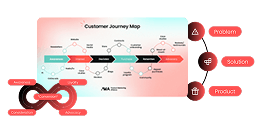




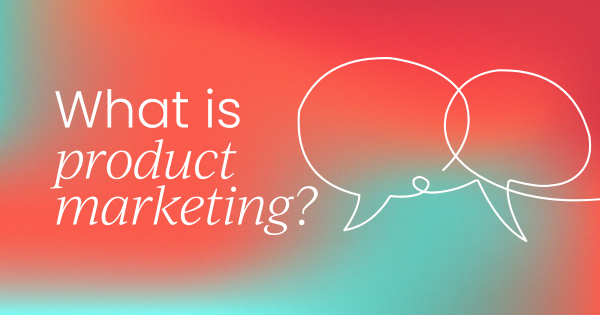


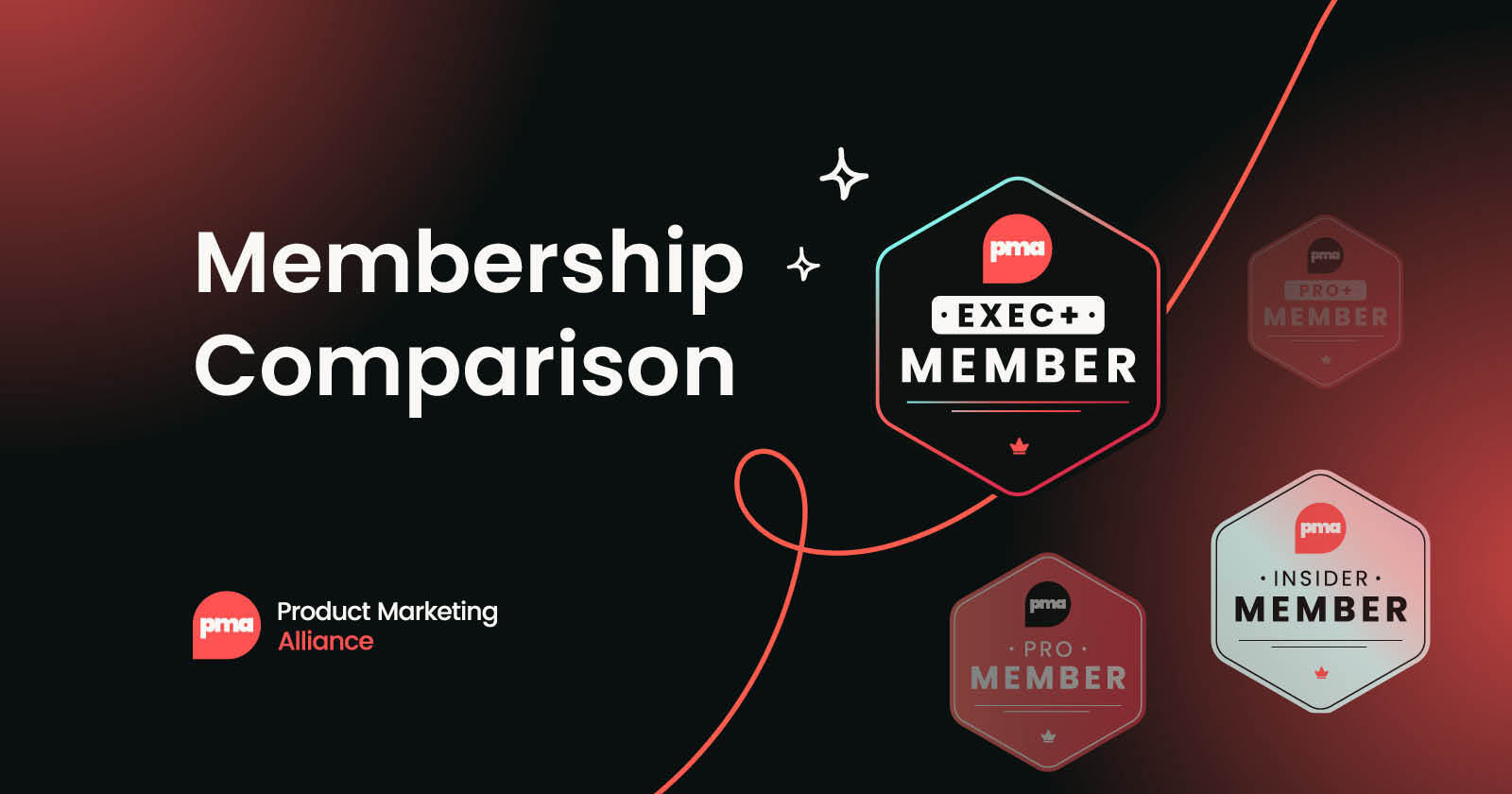


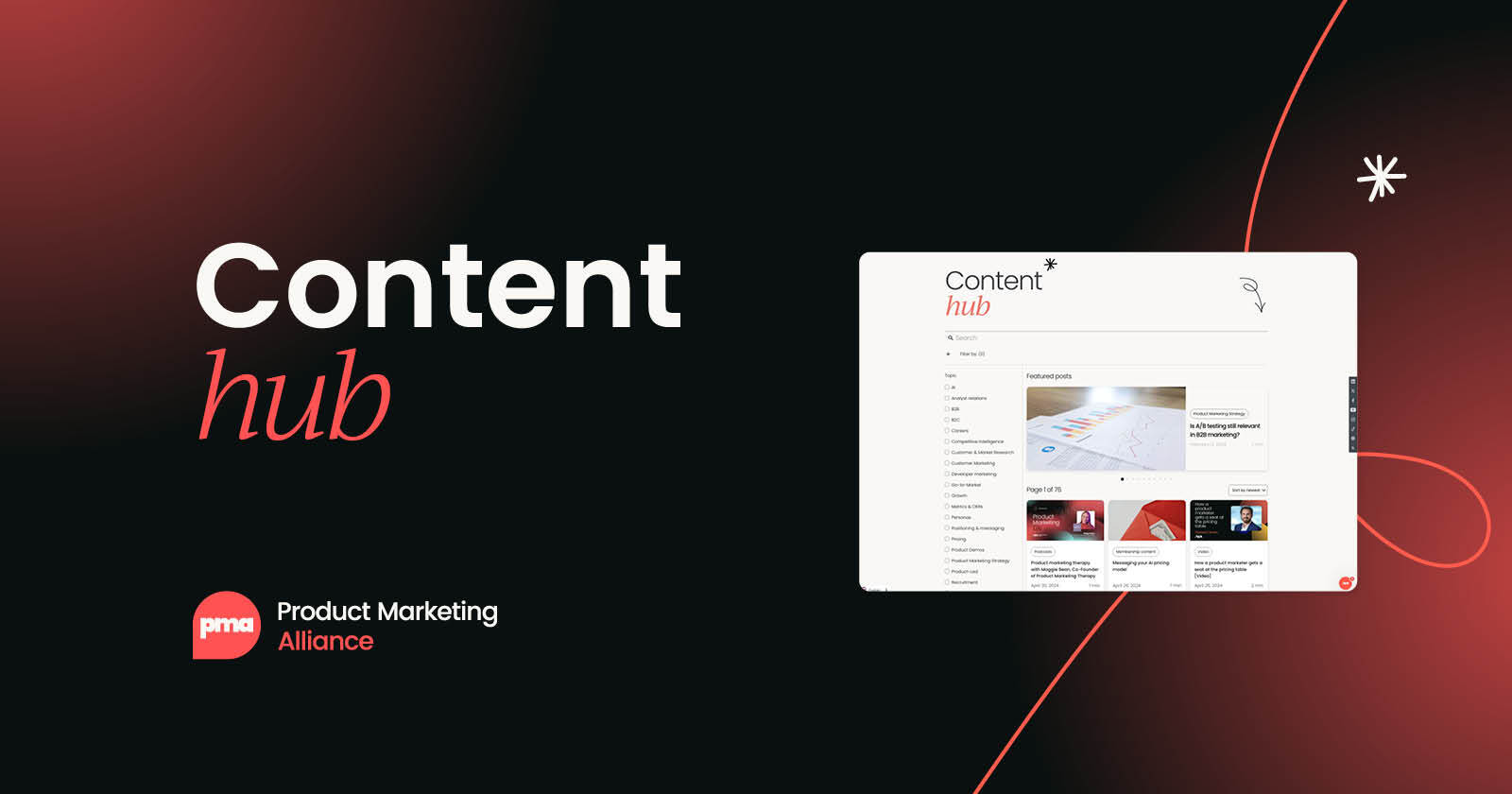

 Follow us on LinkedIn
Follow us on LinkedIn


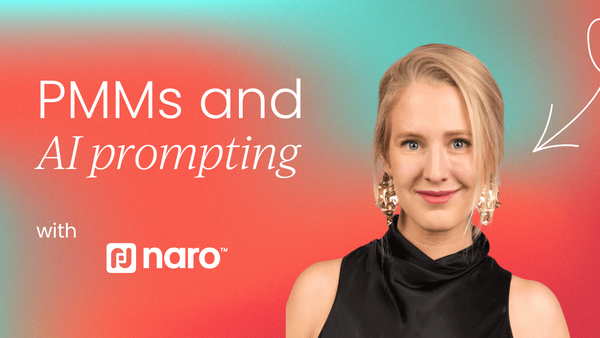


.svg)
Start the conversation
Become a member of Product Marketing Alliance to start commenting.
Sign up now